Vaping: How tobacco companies are drawing in vapers as teen use soars
Vaping is the cleaner, safer way to ‘smoke’ and while it is better than cigarettes, there is fierce debate among experts about the long-term effects of vaping on young people and teens who are taking it up at record pace.
NSW
Don't miss out on the headlines from NSW. Followed categories will be added to My News.
In the early 1980s, US marketing research analyst Diane Stewart Burrows sent memos to US tobacco executives. In one titled NBER Models Of Price Sensitivity by Age/Sex she pointed out old smokers were a dying breed and impressed the need to recruit new customers.
“The loss of younger adult males and teenagers is more important to the long term, drying up the supply of new smokers to replace the old …. Younger adult smokers are the only source of replacement smokers.” In another, a special note was made to pay “Attention to Blacks, Hispanics, females …”
Fast-forward almost 40 years and after numerous successful smoking cessation campaigns and tough legislation, Big Tobacco no longer wants to sell cigarettes. Kids no longer smoke cigarettes, 97 per cent of houses are now smoke free. But Big Tobaccos has no plans to shut up shop.
In July 2019 Philip Morris International announced: “We’ve made a dramatic decision. We are building PMI’s future on smoke-free products that – while not risk-free – are a far better choice than cigarette smoking.”
They are now in the e-cigarette game – vaping. Much less lethal than cancer-causing cigarette smoking, vaping delivers the same addictive drug – nicotine.
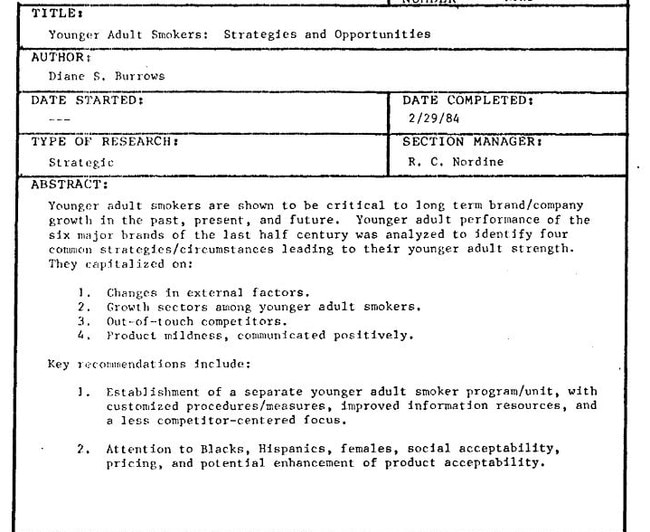

According to a 2019 letter obtained by Saturday Extra, Philip Morris is actively recruiting new customers from the Aboriginal community whose smoking levels are still about 43 per cent.
“We would like to offer adult smokers who would otherwise continue to smoke, less harmful alternatives such as e-cigarettes,” the letter said.
Sydney-based Dr Alex Wodak, a frontrunner in harm reduction describes vapes as: “A wonderful thing, it is a public health bonanza, like vaccination, it is in that order of magnitude. This is cars without seatbelts being replaced by cars with seatbelts.”
But others are more suspicious of the tobacco companies’ motives and have questions about just how safe vaping is.
Leading nicotine addiction specialist Professor Renee Bittoun sees echoes of that 1982 email strategy in the letter to the Aboriginal health service.
“This is targeting Aboriginal medical services, talk about below the belt. It’s horrifying to target indigenous health services,” she said.
“It basically said vaping is the best thing since sliced bread with a big Philip Morris letterhead.”
The vape lobby argue harm minimisation is the crux of the issue and no one disputes vaping is better for existing smokers, but the fastest growing market in the vape business is teenagers.
An estimated 9.5 per cent of 12-15 year olds and 20.7 per cent of 16-17 year olds have used an e-cigarette.

Anyone can buy colourful, sweet-flavoured vapes sold via Instagram, Snapchat and Facebook and it is seemingly unpoliced.
Just last week a Waverly College student was suspended for using Snapchat and Instagram to sell the products to students across the eastern suburbs, with each vape selling for between $15 and $25. If you have a teenager at school, you have probably have already received a letter from the school about the rise in vaping.
One mum, who wished to remain anonymous to protect her son, told Saturday Extra he was caught vaping last year while in year 9. Then he got caught again earlier this year with a vape in his school bag.
“Upon searching his room we found five to six vapes that are disposable. We went through his phone and found the person on Snapchat who was sending messages and meeting at the skate park near Albion Park School and selling them to kids in the morning,” she said.
“It is super frustrating they are so easy to get for the kids and my son says he knows kids in year 7 that vape.”
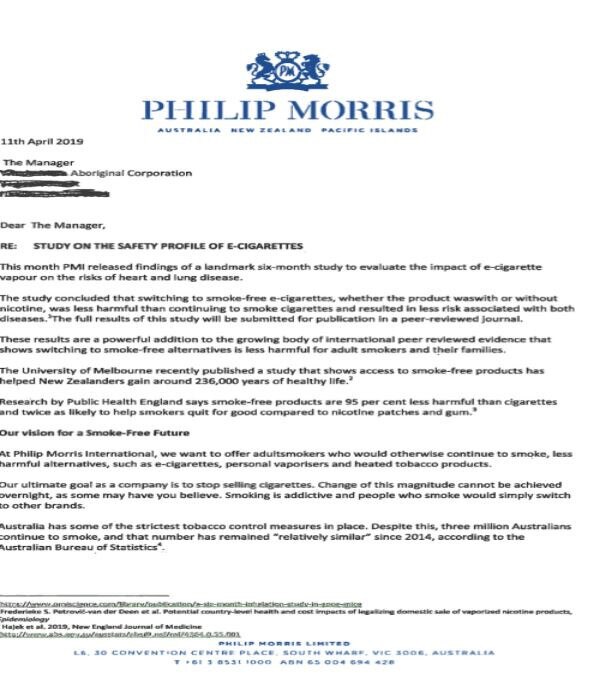
Prof Bittoun said her 12-year-old grandson was offered a vape last week at his north shore primary school.
“He was offered one by another primary school student,” she said.
Last month Prof Bittoun tested vapes volunteered to her by Aboriginal teens aged 12 to 17. All contained nicotine.
The message that smoking is bad and vaping is better has clouded the air on the issue of safety, she said.
“Vaping is a term promoted by the tobacco industry because it is not smoking, it’s not cigarette, and the view is vaping is just water vapour with flavouring in it and it’s benign and this notion that nicotine in itself is benign, it’s safe, but it isn’t,” Prof Bittoun said.
“Nicotine is not safe in adolescents, it is not safe in the developing brain at all. These are kids whose brains are still developing. It is an addiction, the most addictive substance known to humans. In kids, there are lots of changes in the brain.”
Dr Wodak refutes vaping can cause harm.
“21,000 Australians die every year from smoking related conditions. There has not been a death anywhere in the world that is clearly attributed to vaping nicotine,” he said.
The kids who vape were likely to be smokers first, he argued.
“The explosion of vaping in teenagers is nonsense,” Dr Wodak said.
“For the concern to be valid, we would need evidence. Which doesn’t exist, that frequent and regular vaping is common in Australian teenagers and it is causing harm. We don’t have that evidence of harmful vaping in Australia.”

Prof Bittoun strongly disagreed.
“That is an outrage, it’s not true,” she said.
“We have less and less kids smoking than ever before. I’m outraged by people who say that.
“To say that kid would have smoked anyway is a hypothesis that is unconscionable.
“It’s the cigarette of the 21st century. Vaping fell into the laps of the tobacco industry, people forget that nicotine is made from the tobacco plant and who owns tobacco farms? Philip Morris and British American Tobacco are the biggest tobacco farmers in the world.”
There have been numerous accounts of deaths overseas.
In February 2020 the US Centre for Disease Control showed 68 people have died in 29 states and the District of Columbia as a result of vaping, but not from nicotine, more from the additives included in vapes.
“The CDC has reported that vitamin E acetate is a potential cause for the outbreak (of deaths), but it might not be the only one. Many of the patients report vaping marijuana products or marijuana and nicotine products, but others only vaped nicotine products,” the National Centre for Health Research said.
“Until these reports of hospitalised teens and adults are scrutinised in greater depth, we won’t know what types of vaping are most dangerous and under what circumstances.”
There is also a growing body of research that the flavour additives in the sugary sweet vapes may cause something called ‘popcorn’ lung.
A 2019 study published in Nature journal found Diacetyl and its chemical cousin 2,3-pentanedione were common flavours used in vapes.
“Our study indicates that the two widely used e-cig flavouring chemicals impair the cilia function in airway epithelium and likely contribute to the adverse effects of e-cig in the lung,” it stated.
“In the early 2000s, a series of studies reported a strong association between the production of butter-flavoured microwave popcorn and bronchiolitis obliterans (‘popcorn lung’), an irreversible lung disease.”
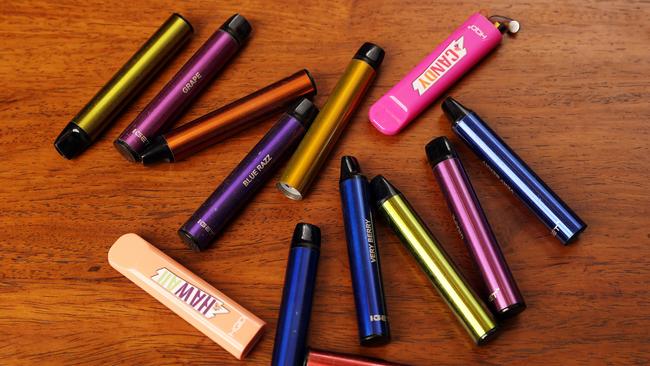
But Prof Bittoun said: “I think we are waiting for a disaster to happen.”
On June 6 The Sunday Telegraph ran a story about a teenager who had a seizure and, after eliminating everything else, his parents were told by doctors that the vape he had consumed was the likely cause.
High levels of nicotine can cause seizures, but the very mention of it caused a firestorm on Twitter from the pro-vape lobby, people with handles devoted solely to vaping, including Vape Man and Vape For Life and Safer Nicotine Consumers, flatly refused that vapes could harm.
A self-appointed group of harm reduction academics who call themselves AOD Media Watch criticised and questioned the mother’s story.
Dr Wodak belongs to the same group and he also refuses to believe the mother’s and doctor’s account.
“It’s not just my view that it is nonsense. Yes, it is possible to have a seizure with very high doses of nicotine, but not with the doses people can get up to with vaping,” Dr Wodak said.
Professor of Respiratory Medicine Matthew Peters, who AOD Media Watch called a ‘non-expert’ in an email complaining about last Sunday’s report, said existing smokers using vaping to quit and teenagers taking vaping up are two very separate issues the lobby fails to grasp.
“No teenager can smoke 20 cigarettes a day at school or at home. Most kids grow up in a home where no one smokes so it is only dawning on parents now that vaping is going on.

They can go to their bedroom, backyard, they don’t come out smelling like an ashtray, so how would parents know?” he said
“They are getting a ultra-high, 50 to 60mg, and the evidence is the absorption pattern from 15 puffs of the 50-60mg is the same as smoking a cigarette. Never in the history of adolescents have they been as heavily exposed to nicotine as the kids vaping now are, never,” Prof Matthews said.
Dr Wodak could not disagree more.
“It is good kids think smoking is not cool and it is good they realise vaping is much less dangerous than smoking. Kids experiment, that is what you do as a teenager, you try everything, kids are going to try vaping, it is the next big thing and they will try it for a while and then go on to something else. Vaping is less dangerous than smoking,” Prof Wodak said.
He does agree teenagers are fascinated by vaping, but he believes it is a passing fad.
“In 2023 they’ll be on to hula hoops or yo-yos, they’ll drop vaping. There are fads and fashions. Regular frequent vaping by young kids is not a problem and where young people vape, they have almost always have been smokers first.”
Which brings us to the question of Big Tobacco’s role in all of this.
Eighty per cent of the black market vape stores online are from China. They land for about $1 and can be sold from $7-$20.
As of October 2021, you will need a prescription to buy nicotine vapes.
After a federal government inquiry, Health Minister Greg Hunt concluded vaping was a path to smoking as opposed to a road to quitting cigarettes.
A recent Canadian study found JUUL in the US contains 59mg/ml of nicotine.
“Such high nicotine concentrations would typically produce a bitter, aversive sensation in the mouth and throat for conventional e-cigarettes … however, JUUL’s nicotine salt formulation with benzoic acid generates aerosols with a lower pH level, which is known to reduce unpleasant nicotine taste and irritation in the upper airway … nicotine salt e-liquids may facilitate greater nicotine delivery by making it easier to inhale high concentrations, particularly among novel users,” the study found.
They concluded: “These products are associated with more frequent use and greater symptoms of dependence.”
The Australian Tobacco Harm Reduction Association (ATHRA), a charity established to reduce the harm from tobacco smoking in Australia, said: “Two vaping businesses provided funding for the initial legal and website costs of establishing ATHRA.”
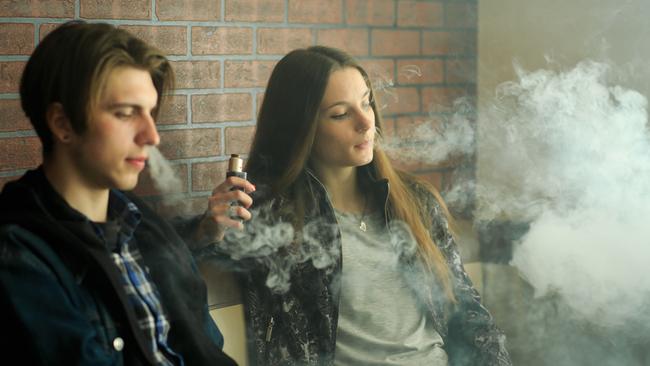
Dr John Cunningham, a Melbourne surgeon and Formula One fan blew the whistle on Big Tobacco sponsorship of the Ferrari F1 team in the 2019 Grand Prix.
He noticed the official team name of “Scuderia Ferrari Mission Winnow” was in fact Philip Morris.
“Philip Morris have for years sponsored Ferrari, all through the 1980s Ferrari went around with Marlborough (badging), laws changed, all that advertising was phased out. Philip Morris have now invented this thing called Mission Winnow, you know looking forward to a smoke free future,” Dr Cunningham said.
“Technically not advertising tobacco but a by-product, but nicotine. They are trying to reinvent themselves to stay in business.”
Dr Cunningham forced Philip Morris’s hand to drop Mission Winnow sponsorship in Australia.
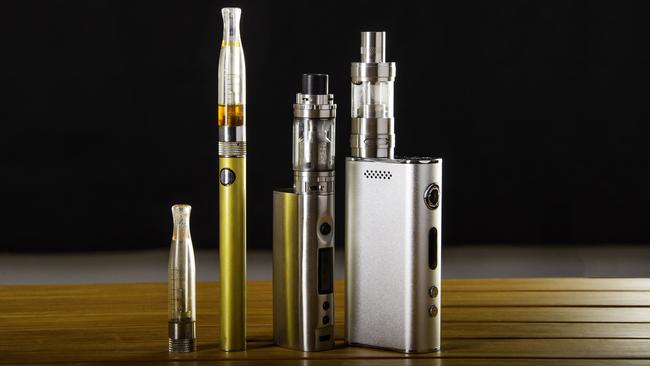
The blow back was fierce.
“I’ve taken a hit on Google rating and Rate My MD,” Dr Cunningham said.
“I think there is a huge amount of money (involved). They are like anti-vaxxers on steroids,” he said.
And he doesn’t for a second buy the line that vapes are safe.
“There is nothing stopping (a vaper from) sucking on it all day. Who knows how much they are sucking in. They can feed their addition with much less restriction. They are cheap and seen as clean, teachers can’t smell it on them. It is a horrible way of becoming addicted to the world’s most addictive drug.
“Cigarette version 1.0 will continue to kill about two out of three of its users.
“In the last 50 years tobacco has killed almost a million Australians, and across the world it kills nearly 6 million people every single year.
“Enter the cigarette version 2.0. Call it a vape, the Big Tobacco companies see these products as their way of staying in business well into the next generation.
“With weasel words like ‘a smoke free tomorrow’ they hope they can recover the reputation of tobacco long enough to create enough addicts to turn them a profit before anyone notices they’re still killing them.
“Claiming that cigarette v2.0 is safer than smoking v1.0 is akin to claiming jumping out of a plane without a parachute at 10,000 feet is safer than at 20,000 feet.”
More Coverage
Originally published as Vaping: How tobacco companies are drawing in vapers as teen use soars




